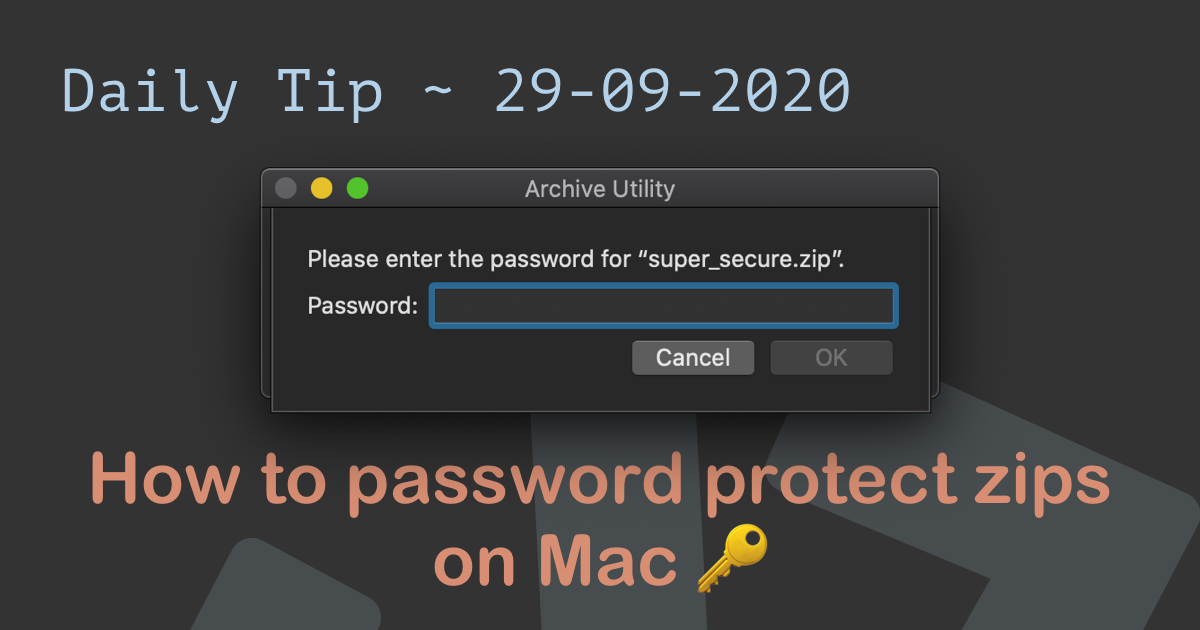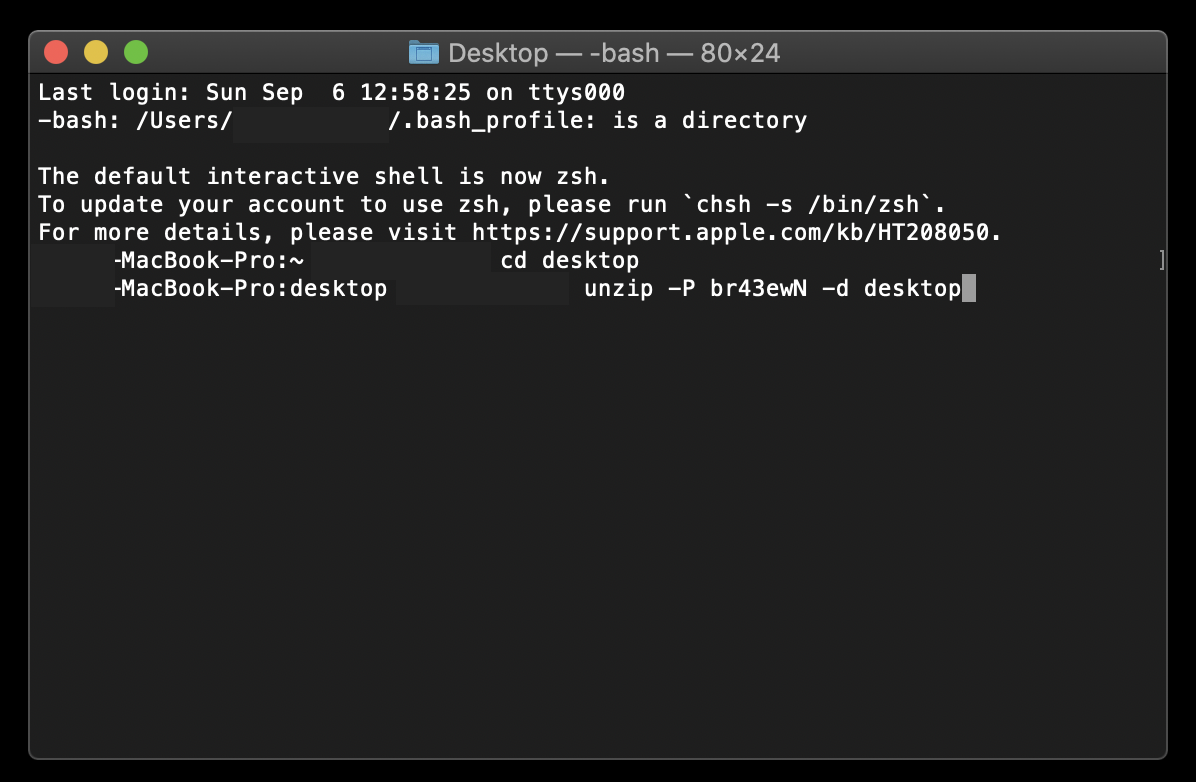
Open the password-protected zipĭespite being created on the command line, you don’t need to unzip the file from the terminal, it can be extended from Mac OS X Finder or within Windows using standard unzipping apps. Note that if you want to use the -er flag on a folder with multiple files, the addition of the r indicates that zip recursively compresses and passwords all files in the folder. Note that the password is not displayed this is normal behavior for the terminal. $ zip -er ~ / Desktop / encrypted.zip ~ / Documents / Confidential / Enter Password: Verify Password: Add: ~ / Documents / Confidential / (deflated 13%) Here’s an example of what this will look like from the command line, in this case we will compress and password protect the entire ‘Confidential’ folder in the users / documents folder, and the password protected zip will be on the desktop of the user positioned for easy access: This is especially important for encrypting multiple file zips under OS X Mavericks. Zip -er archive.zip / path / to / directory / If you plan to compress multiple files in a folder, you want to slightly change the command with the -er flag as follows: The file that was encrypted, “filetoprotect.txt”, cannot now be accessed without entering that password. The resulting archive, in this case named “archivename.zip”, is now encrypted with the specified password. Enter and verify the password – don’t forget.Zip -e archive name.zip filetoprotect.txt Launch the terminal from the Applications> Utilities folder.You can create password-protected archives of files and folders:


These encrypted zip files maintain the password protection on different platforms, which means that you can send a protected zip file to a Windows user and they still need to enter the password to view the content.
Secure zip for mac how to#
If you are not sure how to use that, read on to learn how to create zip archives encrypted with passwords.


 0 kommentar(er)
0 kommentar(er)
